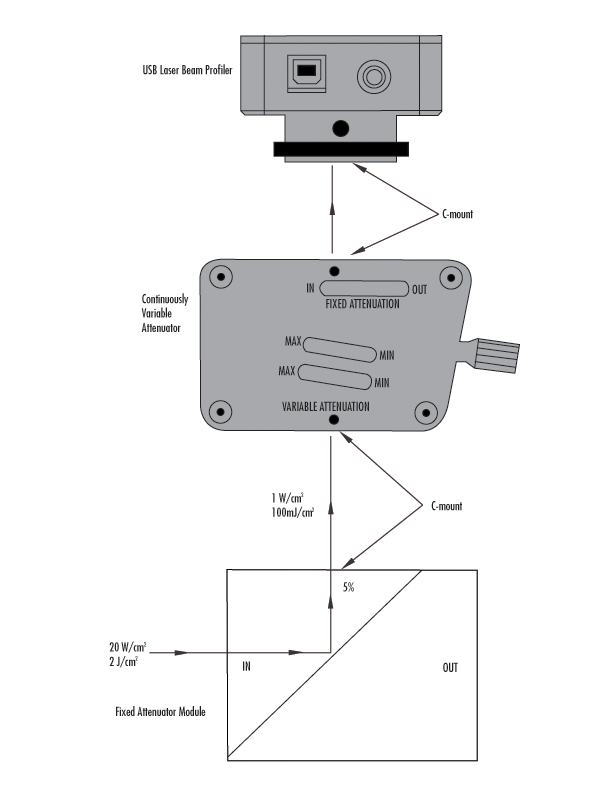
The Coherent® Lasercam™ Beam Profiler features excellent signal-to-noise ratio and linear response for accurate pulsed as well as CW laser beam dimension and uniformity measurements. The new BeamView™ 4.4 interface software features TCP/IP control and NI LabVIEW™ library suite, enabling efficient and smooth integration of beam profiling into any application. Examples of analysis functions that can be performed on the acquired beam images include: beam centroid location, beam peak intensity position, pointing stability, total relative power/energy in beam, peak power/energy density of beam, beam divergence, ellipticity, beam intensity uniformity, Gaussian fit, beam diameter/width based on second moments or user selectable percentage of peak/total energy.


or view regional numbers
QUOTE TOOL
enter stock numbers to begin
Copyright 2023 | Edmund Optics, Ltd Unit 1, Opus Avenue, Nether Poppleton, York, YO26 6BL, UK
California Consumer Privacy Acts (CCPA): Do Not Sell or Share My Personal Information
California Transparency in Supply Chains Act